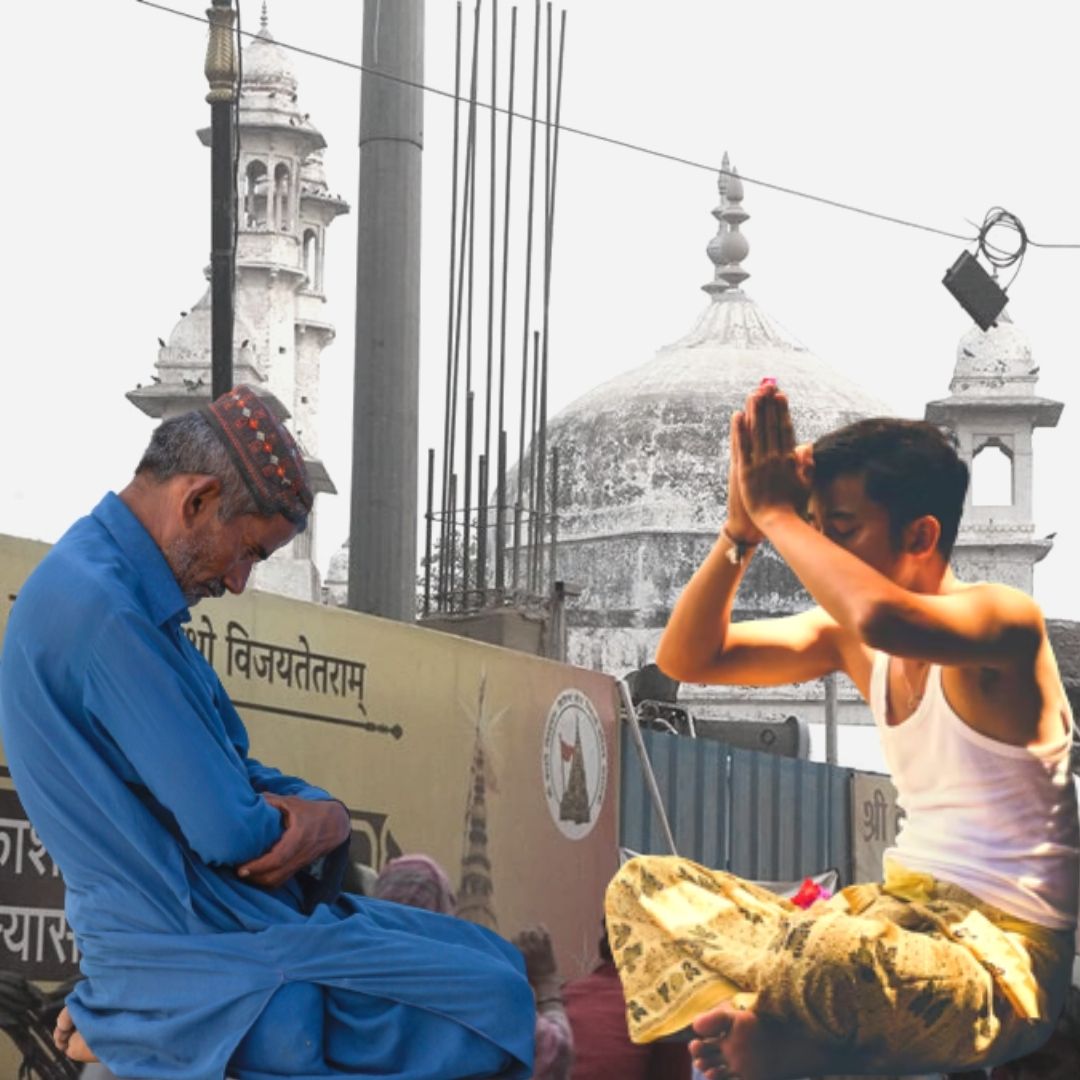
Image Credit- The Indian Express, Unsplash, Unsplash
Places Of Worship Act: Umbrella Provision Respecting Religions Or Depriving Citizens The Right To Worship?
Writer: Mrinalini Kaushik
She is a student of journalism, keen on learning new ways to unlearn, deconstructing news and life. Interested in exploring new media as medium is the message. Avid follower of sports and politics
Uttar Pradesh, 17 May 2022 12:10 PM GMT
Editor : Shiva Chaudhary |
A post-graduate in Journalism and Mass Communication with relevant skills, specialising in content editing & writing. I believe in the precise dissemination of information based on facts to the public.
Creatives : Shiva Chaudhary
A post-graduate in Journalism and Mass Communication with relevant skills, specialising in content editing & writing. I believe in the precise dissemination of information based on facts to the public.
After Gyanvapi Masjid was sealed due to allegations of a 'shivling' being found inside, contesting narratives have been going around the disputed Places of Worship Act 1991 as the mosque management committee challenges the claim in court by invoking this Act.
Supreme Court (SC) will be hearing the plea regarding the video surveyance of the Gyanvapi Masjid. The mosque management committee challenged the Varanasi local court verdict and Allahabad High Court's upholding of the decision to seal off a spot where supposedly a 'shivling' was seen by claiming that the Places of Worship Act, 1991 disallows such activities.
The 'shivling' was found on May 16, through a survey conducted around the Gyanvapi Masjid complex on a different plea about Shringar Gauri temple situated in the Kashi Vishwanath temple-Gyanvapi Masjid by a woman from Delhi who wanted to perform rituals on the outer wall of the masjid as reported by Times Now.
The mosque management committee spokesperson has refuted the 'shivling' image by arguing that the image in question is a fountain, 'wazookhana', where people wash hands before starting their namaz, as reported by India Today.
What Are The 'Places Of Worship' Act 1991?
The Places of Worship Act's objective under Sections 3 and 4(1) of the Act is to prevent the conversion of places of worship as they existed on the day of Independence, August 15, 1947. "Places of worship" includes a mosque, gurudwara, church, temple, monastery, and any place where the public practices their religion.
Another provision under Section 5 states that the case of Babri Masjid-Ram Mandir in Ayodhya is an exception to this Act; any decision, order, or proceedings related to this case are exempt from the Places of Worship Act. The Act contains eight sections, of which Section 3, Section 4, and Section 5 hold utmost importance in this debate.
As cited in News 18, the SC verdict in 2019 stated, "...Parliament determined that independence from colonial rule furnishes a constitutional basis for healing the injustices of the past by providing the confidence to every religious community. Their places of worship will be preserved, and there will not be alteration in the character of the place."
However, last year, Ashwini Upadhyay challenged the Places of Worship Act, purporting that the Act was set against India's values of secularism as it prevented remedial course of action against 'illegal incursion' on places of worship.
Growing Apprehensions Among The Public
In a tweet, Hamza Sufyan reacted to the ongoing debate by saying, "The "Places of Worship Act 1991" clearly states, 'It is hereby declared that the religious character of the place of worship existing on August 15 1947 shall continue to be the same as it existed on that day'. Then under which law the #GyanvapiMasjid is being surveyed & excavated?'
The "Places of Worship Act 1991" clearly states "It is hereby declared that the religious character of the place of worship existing on 15 August 1947 shall continue to be the same as it existed on that day". Then under which law the #GyanvapiMasjid is being surveyed & excavated? pic.twitter.com/77VkyHLx41
— Hamza Sufyan (@HamzaSufyan11) May 16, 2022
Another tweet by Arfa Khanum Sherwani said that "The Places of Worship Act, 1991, clearly prohibits conversion of places of worship as they existed on August 15 1947. History should not be used as an instrument to oppress the present generation. Why should courts allow petitions that defy the Places of Worship Act?"
The Places of Worship Act, 1991, clearly prohibits conversion of places of worship as they existed on 15th August 1947.
— Arfa Khanum Sherwani (@khanumarfa) May 16, 2022
History should not be used as instrument to oppress the present generation.
Why should courts allow petitions that defy Places of Worship Act?
The Act's focus lies in protecting the diversity of religions and aims for harmonious co-existence when it was incepted as a Bill by Shankarrao B.
Chavan, Home Minster under Narasimha Rao's Cabinet, the objective was to mitigate communal tensions in the 1990s during the Ram Mandir-Babri Masjid conflict. Yet, with evolving situations, the Act needs to be interpreted dynamically, sensitive to the society and the repercussions it might hold in contemporary India.
Also Read: Here's How Recyclable City Waste Might Help Generate Rs 30,000 Crore Every Year
 All section
All section













